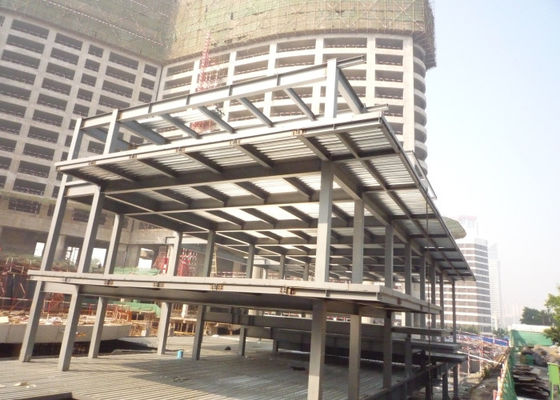Advantages and disadvantages of steel structure:
Generally, the advantages of steel structure are as follows:
Steel has a high strength-to-weight ratio. Therefore, the weight of the steel structure is relatively small. This characteristic makes steel a very attractive structural material for some multi-storey buildings and long-span bridges.
Plastic deformation will occur before failure. This provides greater reserves. This property is called malleability.
The properties of steel can be predicted with great certainty. In fact, steel shows elastic behavior up to relatively high and usually well-defined stress levels.
Steel structures can establish high-quality relationships and narrow tolerances.
Steel structures can usually be prefabricated and mass produced.
It can be quickly constructed in steel structures. This leads to the economic construction of steel structures.
Good fatigue strength is also the advantage of steel structure.
If necessary, the steel structure can be reinforced at any time in the future.
The ability to reuse steel structures is also an advantage.
Generally, the disadvantages of steel structures are as follows:
Steel structures are more expensive than other types of structures.
When heated at temperatures normally observed in a fire, the strength of the steel is greatly reduced. Therefore, fire protection is required.
Like bridges, steel structures are likely to corrode when exposed to air and water and require regular maintenance.
Steel properties
Steel is an alloy of iron and carbon. By adding a small amount of manganese, sulfur, copper, phosphorus, chromium and nickel, iron can be given special properties, so various steels can be produced. Generally, the effects of different chemical compositions on steel are as follows:
The increase in carbon and manganese content will cause properties such as higher tensile strength and yield strength, but lower ductility and more difficult welding.
If the content of sulfur and phosphorus is increased to more than the percentage, it will cause brittleness, which will affect the welding ability and fatigue strength.
The content of chromium and nickel will cause the corrosion resistance of steel, and can also improve its high temperature resistance.
The corrosion resistance can be improved by adding copper.
Subtle changes in chemical composition will lead to the production of various types of steel. This type of steel is used as structural members, such as tubes, plates, tubes, bolts, rivets, steel bars, etc.
The heat treatment and alloys used in steel production lead to different properties and strengths. The mechanical properties of structural steel are as follows:
tensile strength:
Generally, the stress-strain curve of steel is obtained by conducting a tensile test on any standard steel sample. The tensile strength of steel can be defined in terms of yield strength and ultimate strength.
hardness:
Hardness is considered to be the resistance of any material to identification and scratching. It is usually determined by pressing the indenter against the surface. The resulting deformed steel is both elastic and plastic. Different methods to find out the hardness of metals include Brinell hardness test, Vickers hardness test and Rockwell hardness test.
Notch toughness:
There is the possibility of microscopic cracks in the material, or due to multiple loading cycles, the material may develop such cracks. These cracks may cause the structure to collapse suddenly, which is very dangerous. Therefore, to ensure that this does not happen, it is best to use materials with slow crack growth. These types of steel are called notched ductile steels, and the energy absorbed is measured by impacting notched specimens.
Fatigue strength:
If the same load is applied multiple times periodically, structural components designed to carry a single monotonic static load may fail. If you consider the example of a thin rod, it will fail if it bends back and forth beyond yielding after several repeated bends. This type of failure is called fatigue failure. For example: bridges, cranes, offshore structures, slender towers, etc.
Corrosion resistance:
Corrosion is a process in which metals will be oxidized under normal atmospheric conditions due to excessive moisture and oxygen in the air. In areas with high humidity and near salt water, metal corrosion is a very natural and rapid phenomenon. Therefore, efforts to control corrosion by using galvanized and epoxy-coated steel bars have failed in actual use due to the risk of dissolution leading to accelerated corrosion. Corrosion-resistant elements such as copper, phosphorus and chromium are appropriately added to the metal to form corrosion-resistant steel.

 Your message must be between 20-3,000 characters!
Your message must be between 20-3,000 characters! Please check your E-mail!
Please check your E-mail!  Your message must be between 20-3,000 characters!
Your message must be between 20-3,000 characters! Please check your E-mail!
Please check your E-mail! 




